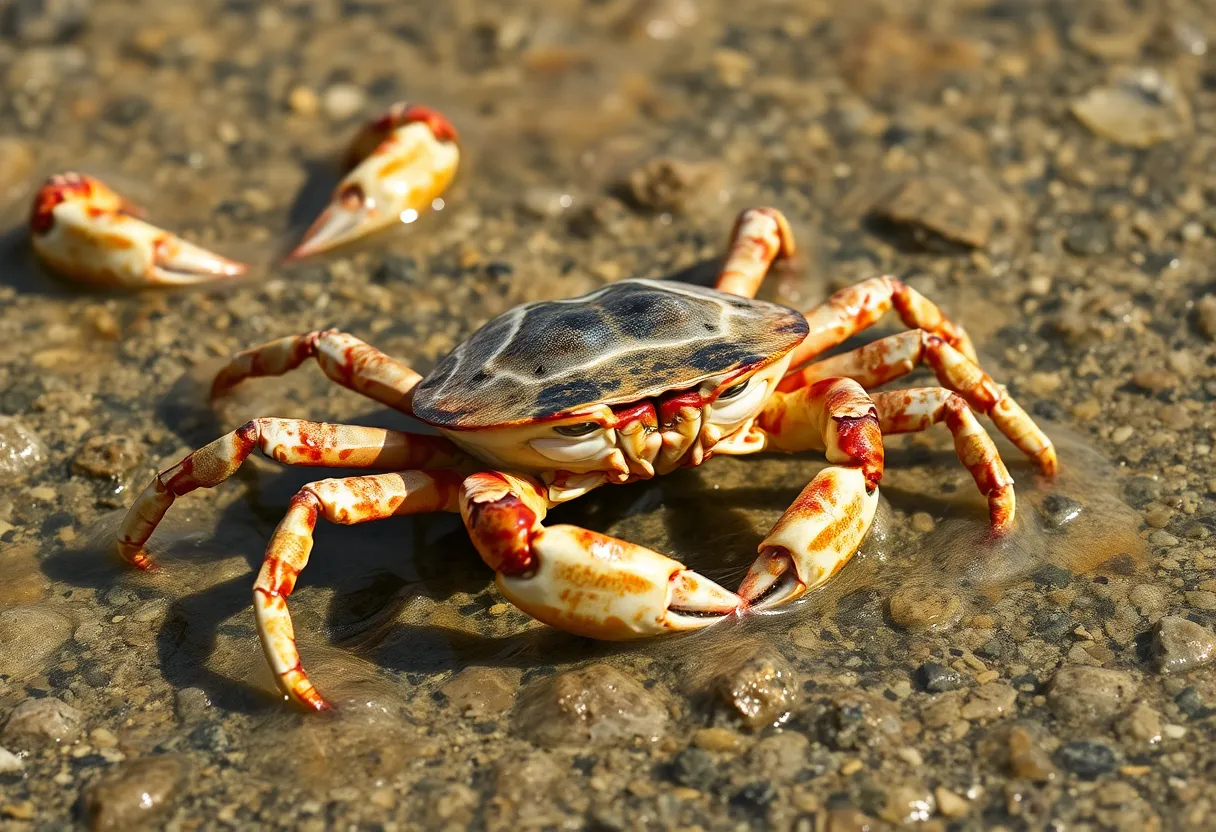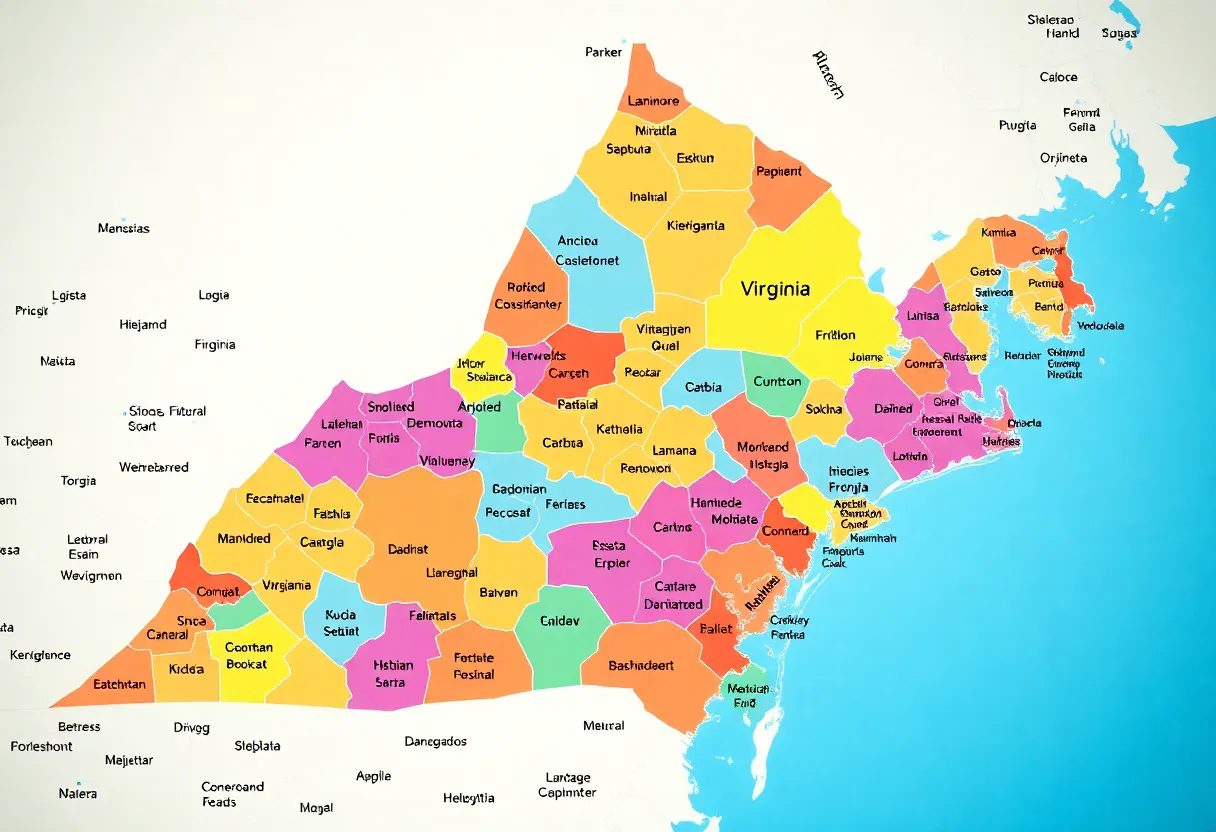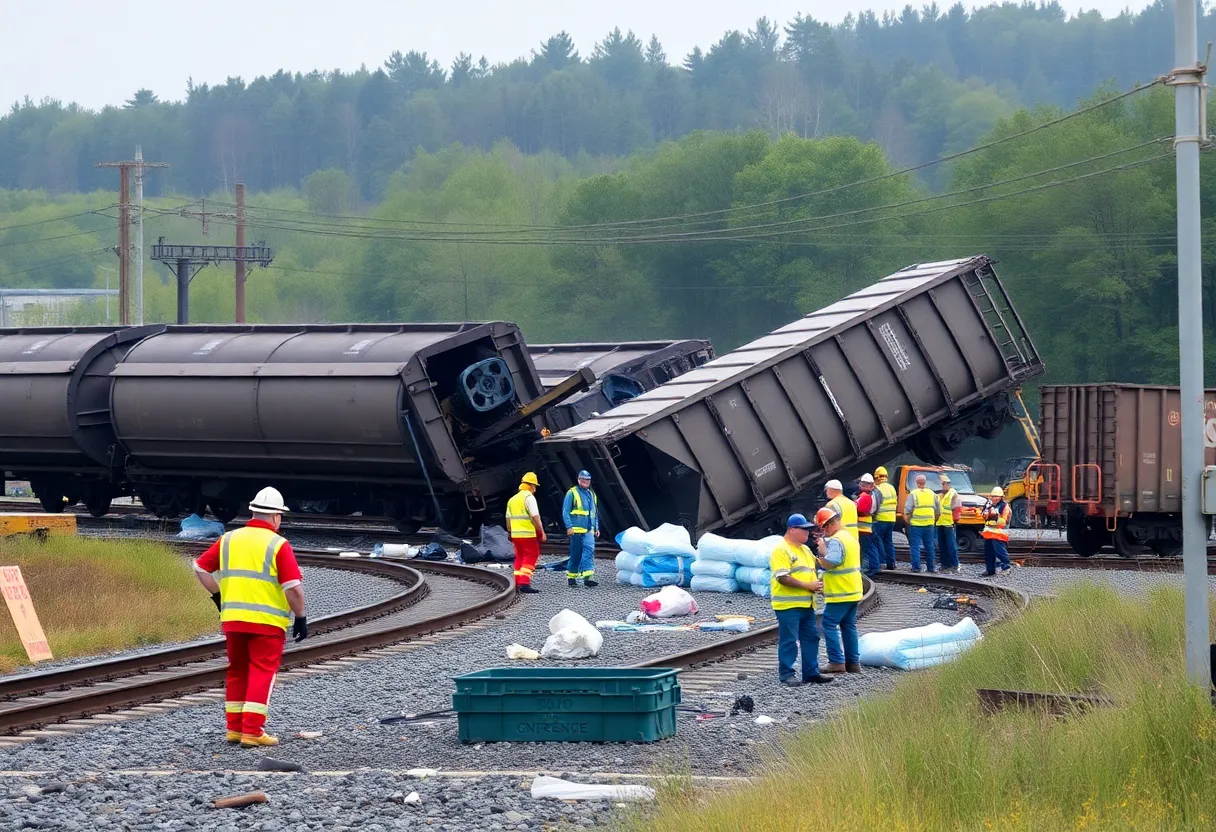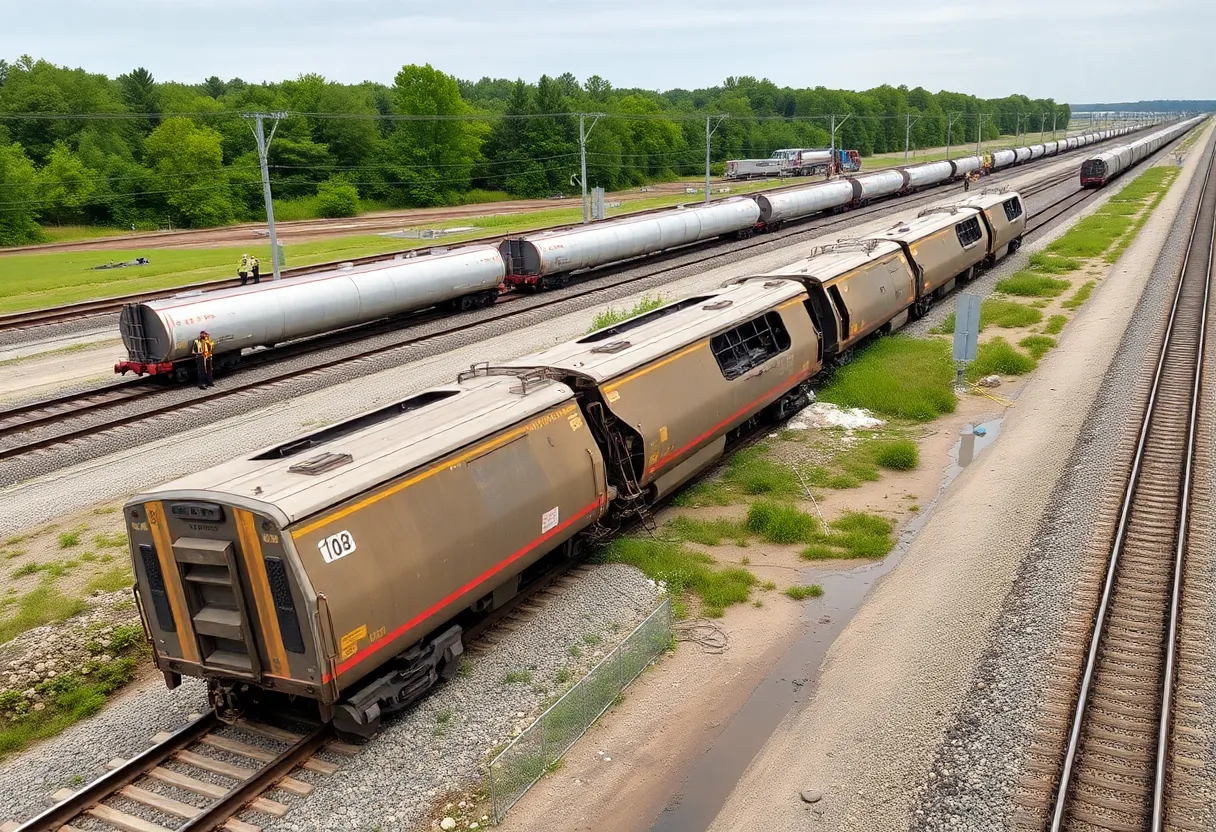News Summary
Adult stone crabs have been spotted in the waters off Willoughby Spit, marking a significant ecological shift in the Chesapeake Bay. Researchers believe this could enhance the local crab industry, as these crabs adapt to the region. The emergence of stone crabs indicates environmental changes and the potential for greater biodiversity in local fisheries. Observations continue regarding their sustainability and interaction with native blue crabs, amidst concerns over the impact of warming waters in the Bay.
Hampton Roads, Virginia – For the first time, adult stone crabs have been spotted in the waters off Willoughby Spit, marking a significant ecological shift in the Chesapeake Bay. This development has been noted by local crabbers who have reported the crab’s presence, indicating a bloom in their population and potential adaptation to the Bay’s changing environment.
According to researchers, including Rom Lipcius, a professor at William & Mary’s Batten School within the Virginia Institute of Marine Science (VIMS), the appearance of stone crabs could enhance the local crab industry. Historically known to inhabit the waters off Florida and extending to North Carolina, adult stone crabs had never been documented in Virginia before. This finding hints at evolving marine ecosystems and changing species distributions within the Bay.
Stone crabs are distinct from the native blue crabs primarily due to their slower movement and the remarkable size of their claws. Unique to stone crabs is the ability to harvest one of their oversized claws for commercial fishing while allowing the other to regenerate. Notably, they can regrow this claw multiple times and return to the waters to reproduce, creating a sustainable model for fisheries.
Research and Population Insights
A handful of stone crabs from local catches has been sent to VIMS’s Seawater Research Laboratory for further study. In North Carolina, stone crab populations thrive, while their introduction in Virginia signals the potential for growth and adaptation in this region. It raises curiosity about the sustainability of their presence, particularly as researchers have only observed male stone crabs thus far. The absence of females might suggest issues related to feeding or reproductive behaviors.
Ecological Factors Contributing to Growth
One key factor in the successful maturation of stone crabs is the concerted habitat restoration effort within the Chesapeake Bay. Over 2,000 acres of oyster habitats have been revitalized, leading to enhanced ecosystems capable of supporting various marine life, including stone crabs. Additionally, warmer waters and increased salinity have created a more favorable environment for stone crab larvae to survive and mature into adults.
Lipcius posits that the emergence of stone crabs could signify an ongoing trend rather than a mere anomaly. As they begin to integrate into local marine life, they may eventually become intertwined with the existing blue crab fisheries, adding diversity to the commercial seafood landscape of the region.
Monitoring and Future Concerns
While researchers do not foresee any immediate threats from the influx of stone crabs to the native blue crab populations, they advocate for continued observation. The blue crab, known for its swiftness, is well-positioned to sustain its population even with new species establishing themselves in shared habitats.
Increasing concerns surround the broader ecological ramifications of warming waters in the Chesapeake Bay. The frequency of marine heat waves has doubled in the past two decades, which could lead to detrimental effects such as reduced oxygen levels and harmful algal blooms, posing additional challenges for marine life in the area. With these changes occurring in the Bay, researchers emphasize the importance of monitoring species dynamics, including the potential integration of stone crabs into the ecosystem.
Local crabbers are encouraged to report any sightings of stone crabs to aid the research efforts at VIMS. As they collaborate with the fishing community, researchers hope that further insights can shed light on the evolving marine life in the Chesapeake Bay and ensure the sustainability of all species within its waters.
Deeper Dive: News & Info About This Topic
HERE Resources
Chesapeake Bay Under Threat from Declining SAV Coverage
Additional Resources
- Pilot Online: Stone Crabs in Virginia
- WAVY: She-Crab Soup Returns
- Virginia Dogwood: Stone Crabs and Rising Temperatures
- Google Search: Chesapeake Bay stone crabs
- WAVY: Biological Breakthrough – Stone Crabs
- Encyclopedia Britannica: Stone Crab

Author: STAFF HERE WILLIAMSBURG WRITER
The WILLIAMSBURG STAFF WRITER represents the experienced team at HEREWilliamsburg.com, your go-to source for actionable local news and information in Williamsburg, James City County, and beyond. Specializing in "news you can use," we cover essential topics like product reviews for personal and business needs, local business directories, politics, real estate trends, neighborhood insights, and state news affecting the area—with deep expertise drawn from years of dedicated reporting and strong community input, including local press releases and business updates. We deliver top reporting on high-value events such as Williamsburg Farmers Market, Yorktown Market Days, and Busch Gardens Food & Wine Festival. Our coverage extends to key organizations like the Greater Williamsburg Chamber of Commerce and Colonial Williamsburg Foundation, plus leading businesses in education and hospitality that power the local economy such as College of William & Mary, The Williamsburg Winery, and Sodexo. As part of the broader HERE network, including HEREVirginiaBeach.com, we provide comprehensive, credible insights into Virginia's dynamic landscape.





